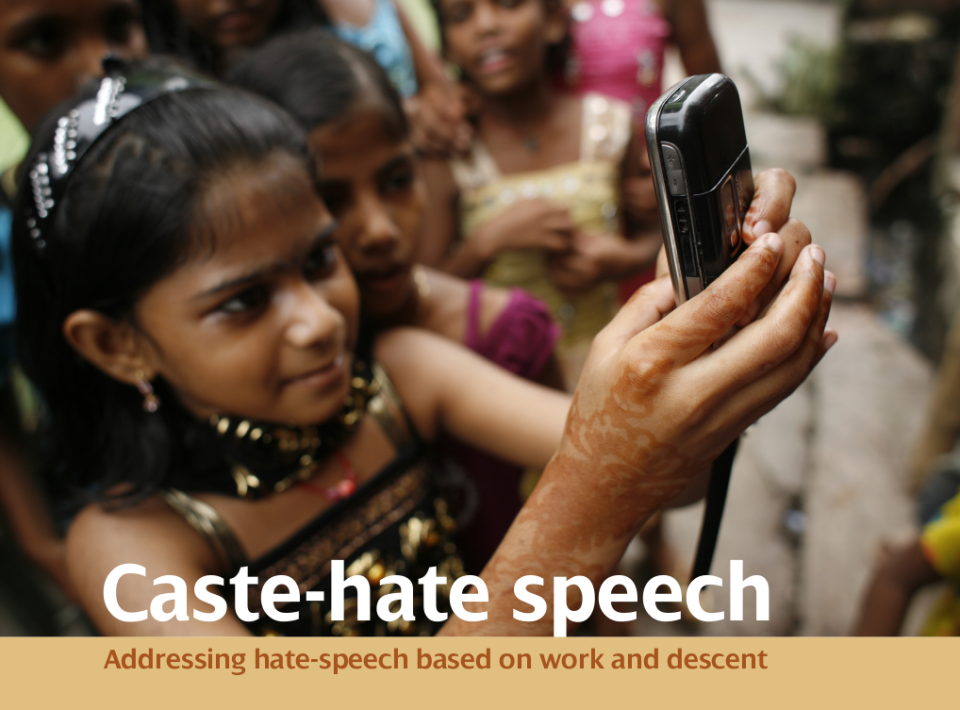
Cover image of the report Caste-hate speech: Addressing hate-speech based on work and descent.
Introduction
“Caste-hate speech is caste-war waged through everyday conversations. It is a war waged against us with humiliating words.” Rem Bahadur, Jagaran Media Centre, Nepal.
Caste is one of the oldest forms of social discrimination in the world. It continues to exist through endogamous practices, rituals, and cultural codes. It has the power to shape people's identities and life-experiences in the context of violence, privilege, everyday articulation, representation and individual or groups' rights to participate in society.
Caste discrimination affects hundreds of millions of people across the globe. Speech and communication that perpetuate caste-based hierarchies and discrimination by humiliating and dehumanising those at the bottom of the caste order - known in South Asia as Dalits - form an indelible part of the caste system. Thus, wherever there is caste discrimination, there is, almost inevitably, caste-hate speech.
This caste-based form of hate speech can, in its worst forms, lead to extreme violence. In recent years, it has been spreading like wildfire online as a means to oppress Dalits. Hate speech relating to gender, race and sexual orientation is increasingly addressed in a global context. The same cannot be said for caste-hate speech, even though it is prevalent in caste-affected societies. It remains unmentioned in all international covenants on the elimination of discrimination and protection of human rights. In general, international human rights agencies that prioritise hate speech continue to overlook caste-hate speech as a distinctive form of discrimination and humiliation.
Nevertheless, some references to this caste-based form of hate speech have been made by United Nations agencies. When the UN released its strategy on hate speech in 2020, it included hate speech based on ‘descent’ - in UN terminology, descent-based discrimination includes caste discrimination. And as early as 2002, the UN Committee on the Elimination of Racial
Discrimination (CERD) made specific references to descent-based hate speech and called upon states to “take measures against any dissemination of ideas of caste superiority.”UN Committee on the Elimination of Racial Discrimination (CERD), UN Committee on the Elimination of Racial Discrimination: Concluding Observations, Canada, 25 May 2007, CERD/C/CAN/CO/18. Available at: https://www.refworld.org/docid/465fe0082.html [accessed 12 February 2021]
Until now, caste-hate speech has been an underexplored phenomenon. This report examines the issue in detail with a particular emphasis on digital media. It is based on extensive research and offers numerous real-life examples of caste-hate speech and its relation to caste-based hate crime.
It argues that global policymakers should consider caste a protected characteristic related to hate speech policies. It calls for the recognition and inclusion of caste in all international covenants related to human rights and hate speech. It further sets out action plans to mitigate hate speech in everyday conversations increasingly mediated by and saturated on digital platforms. And finally, it aims to set a policy agenda and raise media and public awareness of caste-hate speech campaigns and advocacy strategies.
Publication date
Year of publication
- 6444 views






Add new comment